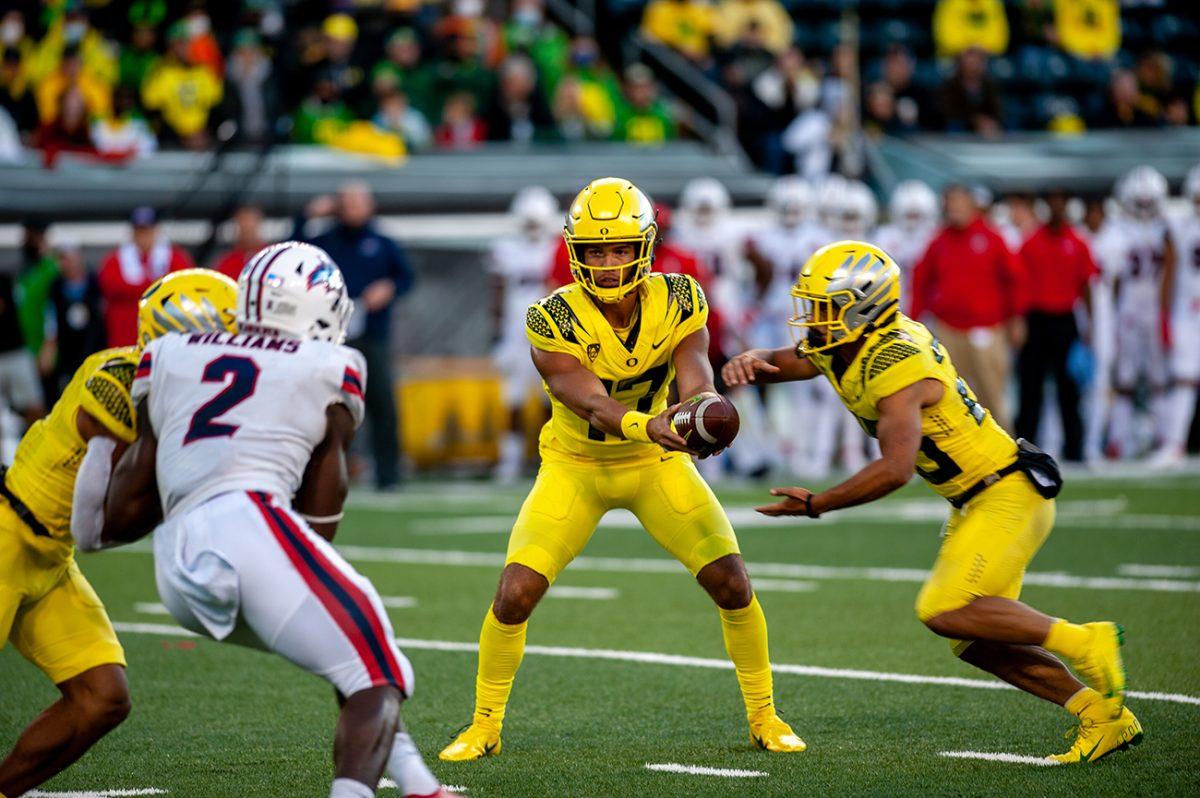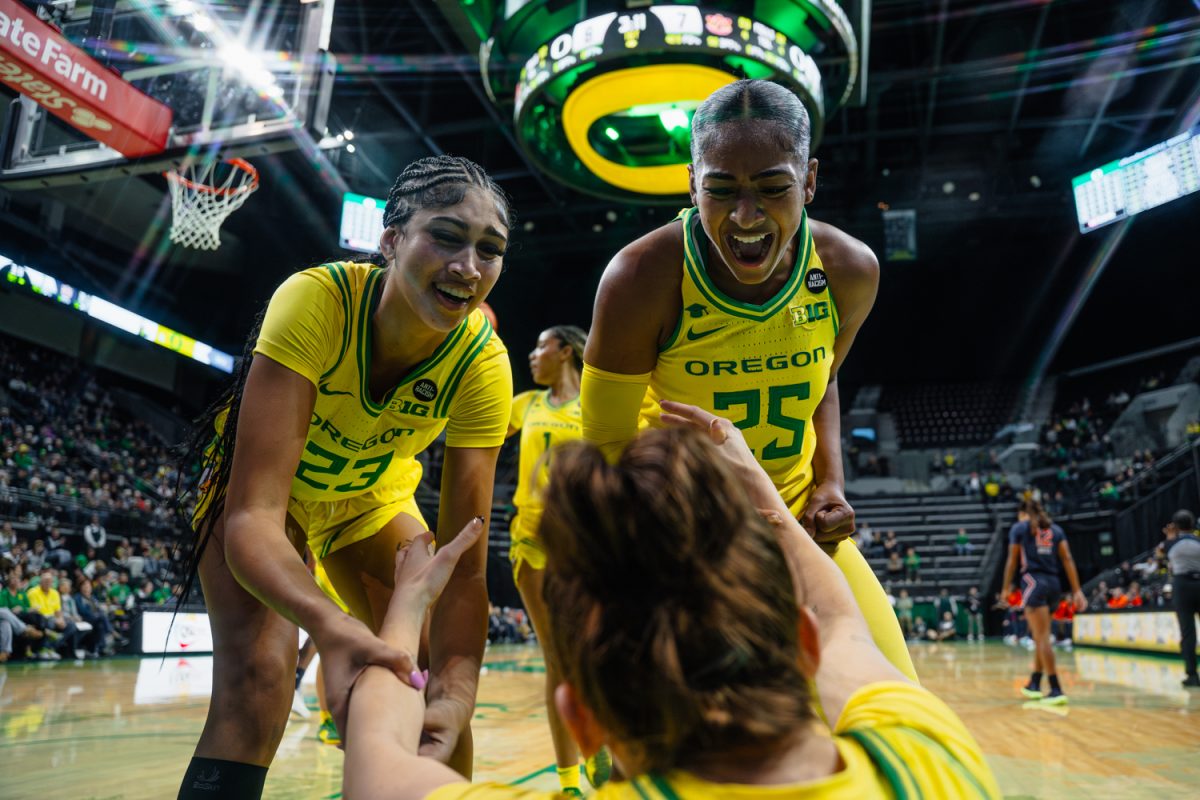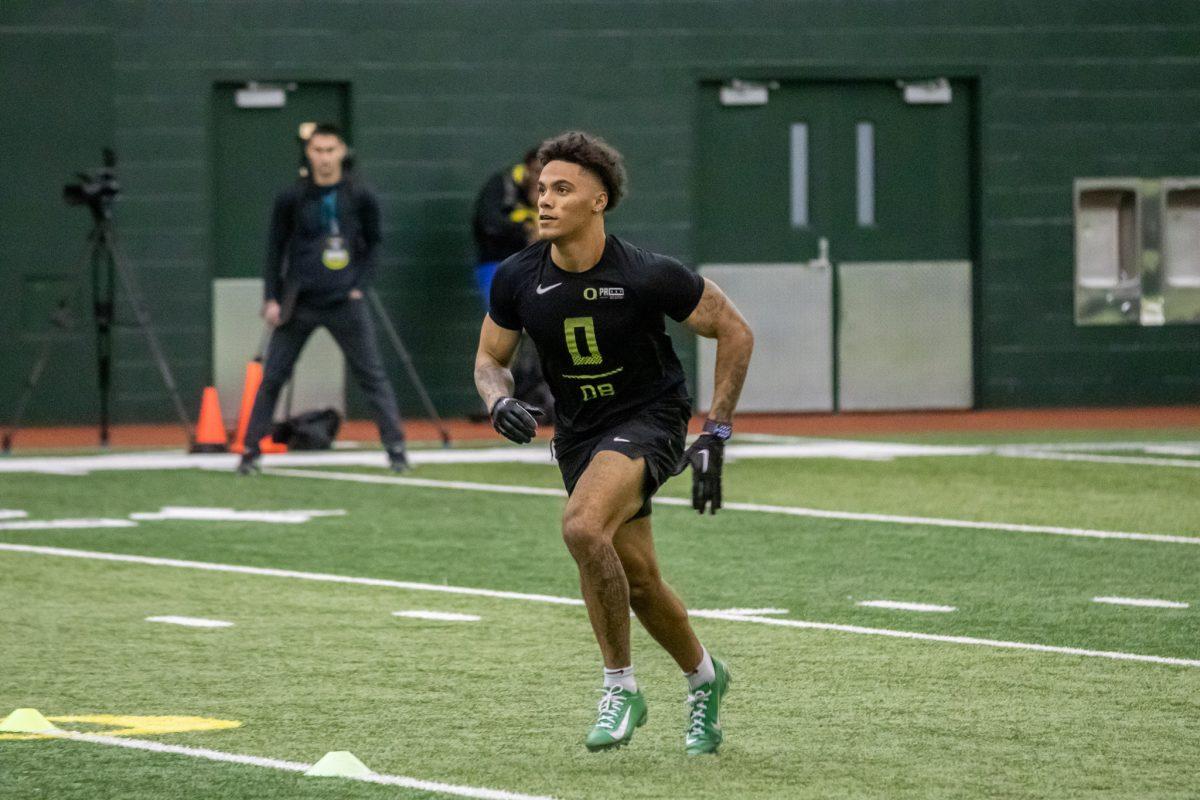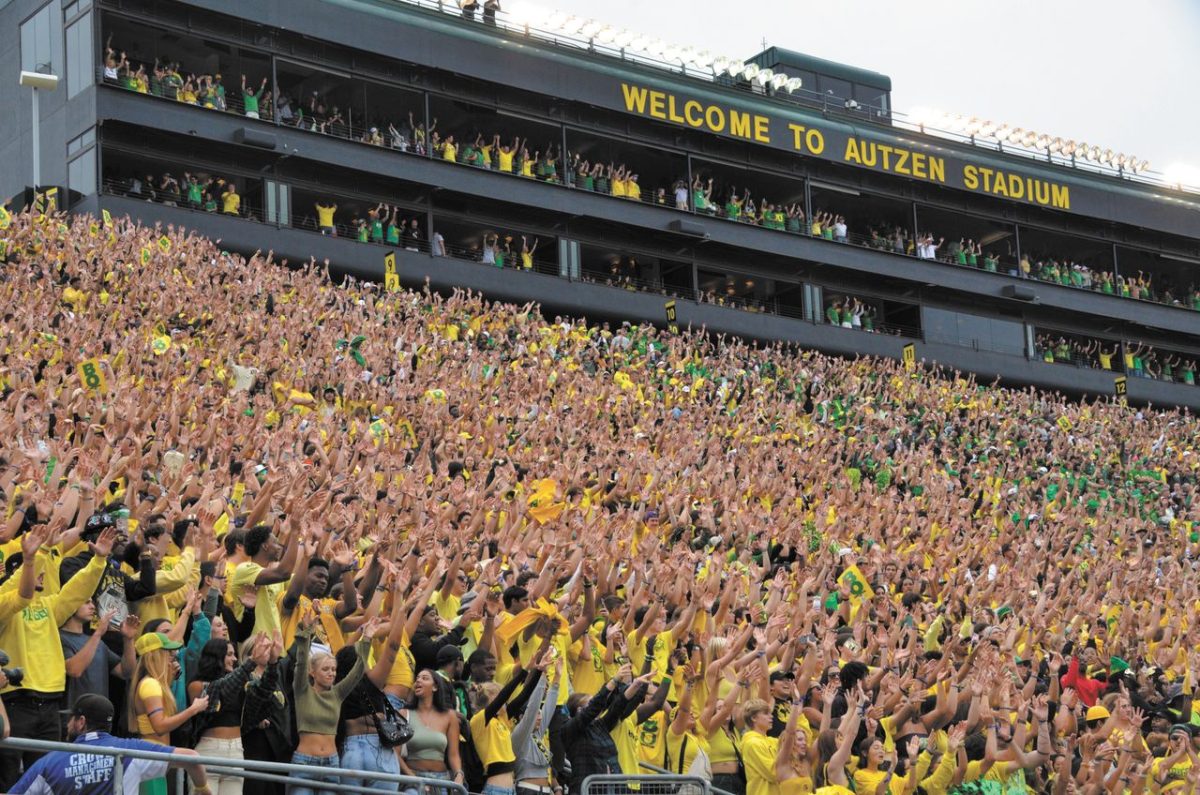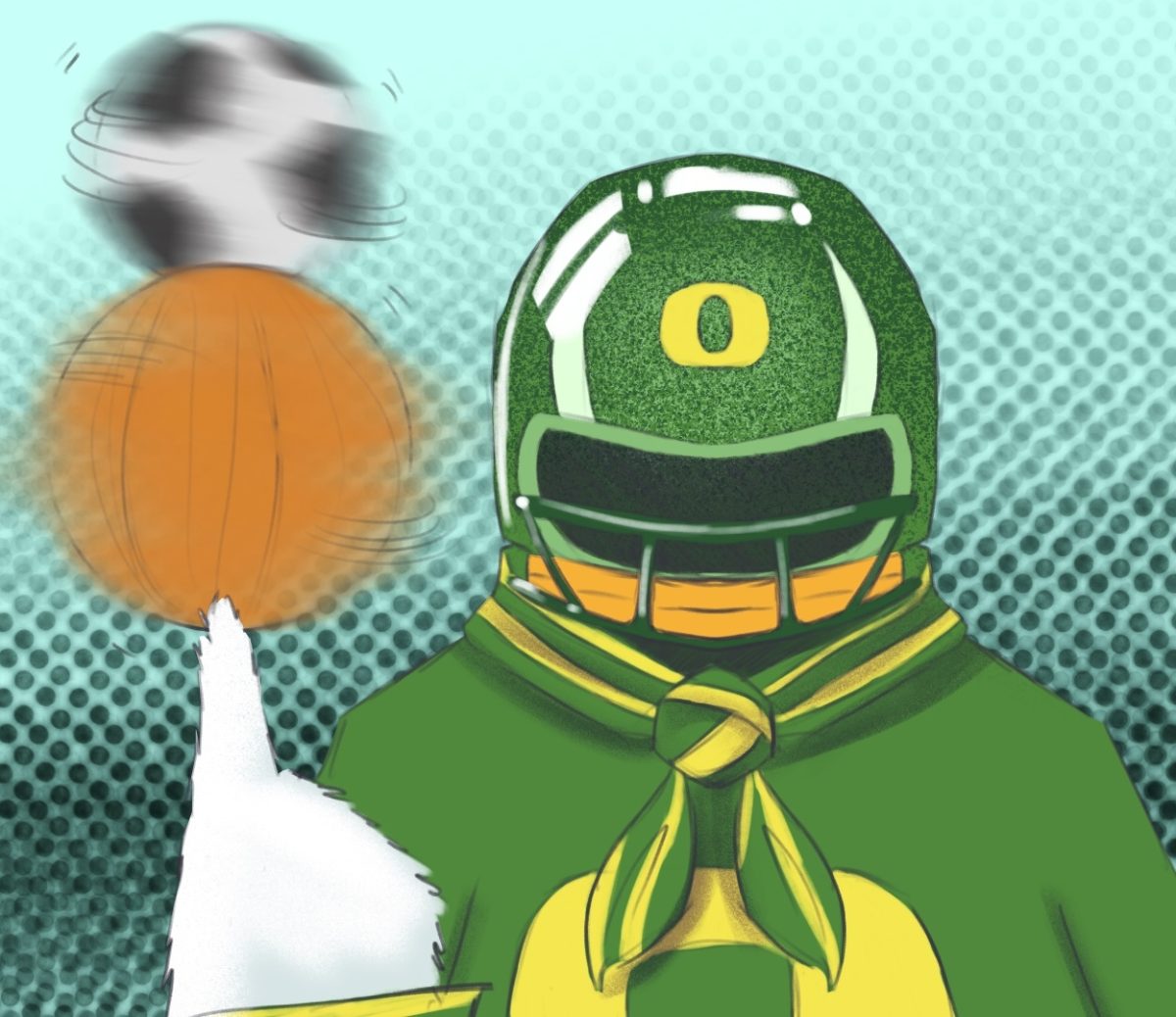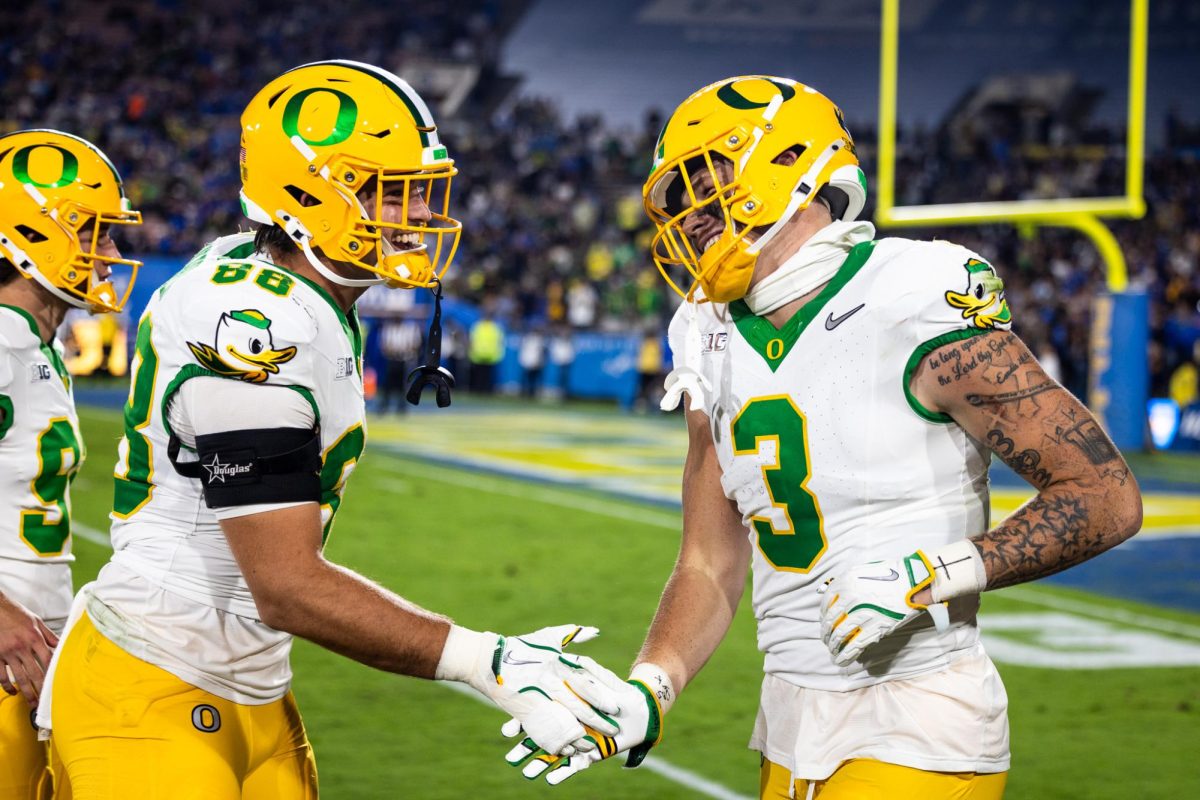Good teams’ seasons get derailed by injuries. Great teams win in spite of them.
With seven regular season games remaining, it’s time to find out if Oregon’s a great team or just a good team who pulled out a signature win in week two.
With multiple season-ending injuries to crucial Oregon players, here’s a potential difference maker at every position as the Ducks enter the back half of their schedule.
Quarterback: Ty Thompson
Who else could it be? The highly-touted freshman has been looming behind incumbent starter Anthony Brown all season. After a Brown performance riddled with indecision and poor reads against Stanford, the murmur for Thompson intensified.
But the coaching staff remains firmly set on Brown.
“He’s had some really good moments, some other moments where we need to improve upon… he certainly gives us the best chance to win,” head coach Mario Cristobal said. “He’s done enough in practice, he’s done enough in games.”
But what happens if Brown’s performance is no longer “enough”? The Ducks drop another game, and then perhaps the staff abandons their seasoned transfer for a glimpse into the program’s future.
Running back: Trey Benson
Byron Cardwell was Oregon’s No. 3 running back against Stanford, and Seven McGee has a more innate pass-catching skillset. But, in the wake of C.J. Verdell’s injury, Trey Benson could replace the absent physicality.
At 6-foot-1, 215 lbs, Benson is the biggest of the backup trio. If he can prove he’s a viable option for blitz pick-ups, Benson’s repertoire could blend with that of the more elusive Travis Dye.
But even Benson knows it would take a significant change for any of the underclassmen backups to take the No. 2 role with a vice grip.
“We all can take that three spot,” he said. “We’ll all wind up rotating in and out.”
Wide receiver: Devon Williams
Williams remains perhaps the most physically imposing receiver the Ducks have at their disposal. Only freshman Dont’e Thornton matches his 6-foot-5 frame. But Williams gets the nod on the scale and in the experience department — which is why, even in a year where the Ducks have constantly rotated their pass catchers, it’s curious Williams hasn’t seen more meaningful snaps.
Through five games, the elastic deep-threat with the ability to overpower defenders with vicious stiff arms, has just four catches for 48 yards. Granted, Oregon’s leading receiver Johnny Johnson III has accumulated just 11 catches on the year.
Williams could remedy an Oregon offense lacking in explosive plays. His 100-plus yard outings against both Oregon State and UCLA last season prove as much. The Ducks will just need their quarterback to start looking downfield first.
Tight end: Spencer Webb
Another victim of Oregon’s depth at the skill positions, Webb’s been relegated to a rotational role in 2021. That’s not to say Webb hasn’t had his moments as a pass catcher. The emergence of the freshman tight end duo, Terrance Ferguson and Moliki Matavao, however, has limited his opportunities.
Webb’s still the most experienced playmaker in the tight end room –– and, even if the freshman duo is knocking at the door, his combination of upperclassmen physicality and refined route running could lead him to thrive in the second half of the season.
Offensive line: Jackson Powers-Johnson
When the interior offensive lineman saw his first game action against Stony Brook, Powers-Johnson made an important realization.
“I just learned it’s not as hard as I think it is,” he said. “For sure it’s college football, I just learned that it’s just a game too.”
Powers-Johnson is playing the “game” the right way. He’s taken advantage of Oregon’s rotating offensive line and is emerging as one of the unit’s most physical presences, despite his youth.
He’s played both guard and center and his blocking has helped spring multiple run plays for big gains.
“It gave me a taste for more, and I want more,” he said.
Defensive Line: Keyon Ware-Hudson
You wouldn’t think it was just Ware-Hudson’s second year on campus. His voice deep, frame filled out, playstyle powerful — the defensive tackle has become a key cog in the Oregon defensive line.
“I can’t speak enough about Keyon,” Cristobal said. “He is physical, and I mean physical… he finds extra time or creates extra time to really dive into improving himself.”
If he can continue to refine his pass rushing abilities — which were on display against Stanford when he wrapped up Tanner McKee and batted a ball down at the line of scrimmage — Ware-Hudson can be the perfect compliment to the freakishly athletic Kayvon Thibodeaux and the multi-positional Brandon Dorlus.
Linebacker: Mase Funa
It’s been two years since Funa’s recorded a sack. Two years since it looked like he and Thibodeaux would be commanding the edges of Oregon’s defense for the coming years.
Funa’s never fully recaptured the prestige he carried when he racked up four sacks in quick succession as a true freshman in 2019.
But, as the injuries pile up, Funa, who at his peak excelled against both the run and pass, will continue to be looked toward on a defense that’s struggled to get the quarterback on the turf.
Defensive back: Steve Stephens IV
Numbers-wise, Oregon’s defense has been far from impressive. The Ducks have been outgained in time of possession in some games and in yards in others. But it’s their knack for coming away with the football that’s keeping the unit afloat.
Boundary safety Verone McKinley III has four interceptions on the year, and Bennett Williams had three before the program lost the defensive back for the season after a freak injury in practice.
If the Ducks are to continue winning the turnover battle on a week-to-week basis, they’ll need another member of the secondary to pick up where Williams left off. Stephens IV, who finally secured a starting role this season, his third with the program, could be that playmaker.
“Film study, knowing what to expect when the team lines up in different formations, whether it’s first or second down,” Stephens IV said of the reasons for the high numbers of turnovers the unit has forced. “Just understanding what teams want to do.”


